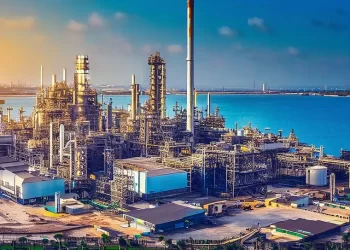Director Environment, Health, Safety and Security at Petroleum Authority of Uganda
The term ‘energy transition’ has been widely used to refer to the shift from use of fossil fuels that include oil, gas and coal (which are the primary sources of Green House Gas (GHG) emissions) to renewable energy sources like solar, wind, hydropower and geothermal. It is argued that this shift must happen immediately, to address the climate change problem.
The Global Energy Mix
Globally fossil fuels currently account for about 83% of the global energy supply. However, the energy mix differs between countries or regions, depending on differences in economic status, alternative energy sources, availability of support industries and infrastructure. For example, in the United States of America and China, fossil fuels account for between 80% to 85% of energy consumption; while in Uganda, the figure is about 10%. Therefore, as I have previously argued, there is no one-size-fits-all approach in this ‘war’ against climate change. From the above statistics, Uganda has already ‘transited’ into renewables, while many other countries are yet to achieve the desirable balance between renewables and fossils energy supply.
Energy Transition or Emissions Transition?
Practically, fossil fuels are not the problem. The GHG emissions from the production and combustion of fossil fuels to generate electricity, heat and for transportation is the real problem in the war against climate change. GHG emissions from oil production and refining account for approximately 15% to 25%, while end use (combustion of oil fuels to produce energy) accounts for about 75% to 85%. Therefore, rather than focus on abandoning exploration, development and production of oil and gas, which has been proven to provide reliable energy, more can and should be done to decarbonize the production and use of oil and gas and to work towards a net zero carbon petroleum industry.
For example, there is promising technology being developed to capture carbon dioxide during oil production and use it to enhance oil recovery, or as an industrial raw material or to inject it underground for permanent storage. Carbon dioxide capture and storage technology alone has the potential to reduce emissions from the fossil fuels energy industry by up to 20% by 2050. The challenges to realization of the full potential of this technology relate to high cost and lack of enabling policy incentives and infrastructure. Therefore, the protesters against oil and gas projects and their funders could divert their resources into the development of such technologies that shall enable the sustainable production and utilization of fossil fuels.
Do Renewable Energy Sources Provide Clean Energy?
As much as renewable energy sources have been labelled green technologies, some of these are not as ‘green’ as they are portrayed when you consider their Life Cycle GHG emissions and other associated environmental impacts. For example, with wind energy the emissions associated with mining and processing of metals used in the manufacture of wind turbines/propellers need to be considered, in addition to other environmental and social impacts.
For electric-powered transport vehicles, the power batteries require raw materials such as lithium, cobalt, manganese, nickel, and graphite whose mining/processing and disposal is associated with significant GHG emissions and other environmental impacts. The current global disposal and recycling capacity of the batteries that are produced to power electric vehicles is only 1% of the global demand. This implies that the continued use of these batteries is building a problem for future generations. In some countries, the ‘green’ electric vehicles are being powered by electricity generated from coal power stations, which emit far more GHGs compared to oil or gas!
A Smooth or Turbulent Energy Transition?
The global energy consumption is projected to grow by 50% between 2022 and 2050. However, this projected growth is not matched by alternative sources of energy away from fossil fuels. Therefore, the desired energy transition cannot be achieved through mere protests against fossil fuels without alternative energy sources that are reliable and sustainable, to ensure the required global energy security. A shortfall in fossil fuels supply that is not matched by alternative sources of energy creates a ‘turbulent’ and unpredictable energy transition, rather than the ‘smooth’ transition that is required to meet climate change goals. Uganda and other developing countries, which are projected to experience strong economic growth over the next decade, would be impacted the most by this turbulence. The current global energy crisis, as a result of the Ukraine-Russia conflict is a good demonstration. The global economic impacts of the prevailing turbulent energy market notwithstanding many countries, which had stopped using coal, have switched back to exploitation of coal which emits far more GHGs compared to oil and gas.
The Role of Oil & Gas in a Smooth Energy Transition
Even if the share of fossil fuels in the global energy mix drops by 11% (from 83% to 72%) by the year 2050, as is projected the overall projected growth in energy demand of 50% by the same year implies that fossil fuels will still dominate the global energy mix for the foreseeable future. As the transition pathways become clearer, oil and gas will continue to provide cleaner energy compared to coal to meet global energy needs, until better alternatives become available. Specifically, gas has been identified as one of the cleaner energy alternatives that will play a critical role in energy transition. In addition to being a cleaner energy source for power generation, industrial and domestic use, evolving technology of using gas to generate hydrogen energy is promising to be a very important game changer in the petroleum industry’s efforts to decarbonize. This is because combustion of hydrogen (rather than oil or gas) has zero GHG emissions. In conclusion, therefore, energy transition is not about a world without oil or gas but the sustainable use of the available energy resources to meet energy demand and achieve climate change goals.







